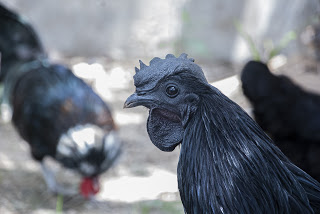Sandalwood Plantation and its uses
The Botanical name of Sandalwood is "Santalum album L" and it is also known as Chandan or Srigandha in Kannada is a special type of tree because of its expensiveness when in comparison with other trees, though there are varieties of sandalwood available all over the world, the Indian sandalwood has made a name for itself due to its commercial value.
The tree of Sandalwood will take about 10 to 15 years to grow when it is cultivated in Organic methods and it takes about 25 to 30 years to grow naturally and it can be grown as intercrop to the plants such as Mango and Malabar neem.
There are 3 types Sandalwood found in India namely:
a. White Sandalwood.
b. Red Sandalwood
c. Yellow Sandalwood.
This tree is abundantly found and grown in the states of Karnataka, Tamilnadu, Andhra Pradesh, Maharastra, Gujarat, Telangana and Madhya Pradesh.
The tree can also be found in Countries such as Australia, Pakistan, Nepal, Indonesia and Bangladesh.
Plantation And Cultivation of Sandalwood
Sandalwood tree grows very well in Red Ferruginous loam soil and the plantation to be healthier requires drained soil and fairly moist area, the tree to grow in rich require alkaline soil condition which ranges from 6.6 to 7.5.
The tree to grow in rich requires hot and humid conditions from a range of 10 degrees to 25-degree centigrade.
To grow sandalwood, firstly the soil beds should to prepared by ploughing, the soil bed are prepared in such a way that it can drain heavy water quickly.
The Requirement of Spaces for Plantation
Seeds are sown during the rainy season in an area where there are bushes, the seeds are sown to the base of the bush, and nearly 3 to 5 seeds can be sown at a time.
The Plant which has grown up to 40 cms and which is about 7 to 8 months old is transplanted to the main field.
To plant the seedlings, pits are dug in size of 50x50x50 cms and spacing for each plant is should be 4mt x 4mt, sunlight is essential for the pits if any water or pests are present to drain or control.
the Sandalwood plant so planted required to maintain regularly, if any weeds are present branches it should be removed if any part of the plant is diseased it should be cleared using Bio-fertilizers, the plants take about 3 to 4 years to start flowering.
Irrigation, Control of Disease And Pest
If irrigation is available the Plant of Sandalwood can be grown throughout the year, drip irrigation is the most practised, the water to plants can be provided in an interval of 3 weeks and excess water should be drained out.
One of the important diseases which is hazardous to the plant of Sandalwood is Spike disease which is caused by organisms such as Mycoplasma, this disease is seen during the developmental stage of the tree, the disease can cause leaves to become fewer and smaller, it the disease is not taken care it can ruin the plants leading to the death of the tree.
Pests such as Aurivillies is one of the main reason which causes damage to the trees, these can be controlled using organic or chemical fertilizers.
Uses of Sandalwood
Sandalwood is used namely as follows:
1. In perfumery products.
2. In Religious functions and rituals.
3. Works as an Inflammatory agent.
4. Used to make soaps and detergents, Mysore Sandal Soap factory in Bangalore is famous in producing it.
5. Used in making Deodrants.
6. The oil from the Sandalwood as Antiseptic and Antiposmodic properties which be used for medicinal purpose.
7. The softwood of the sandalwood is removed during harvesting and hardwood is taken to mill and powder is made from it, the powder is soaked and left it for 2 to 3 days and distilled and redistilled to produce essential oil.







No comments
New comments are not allowed.